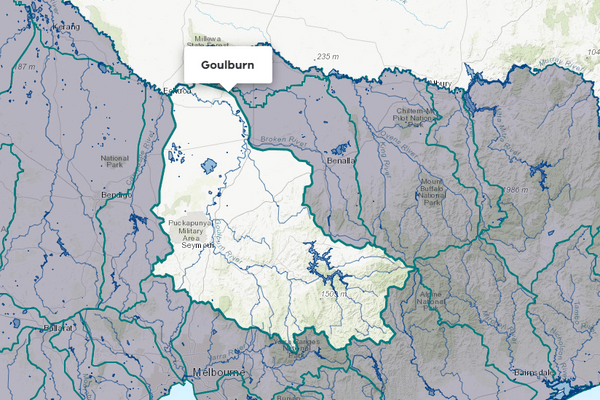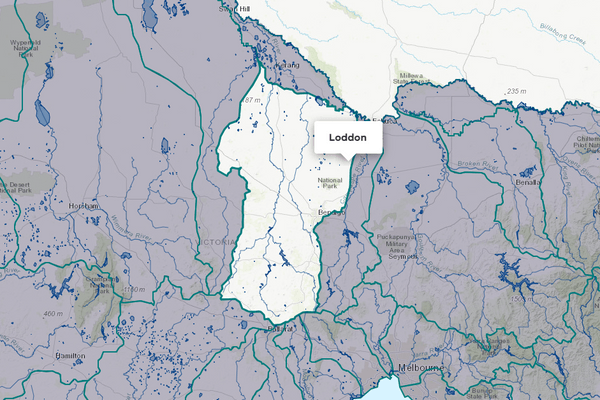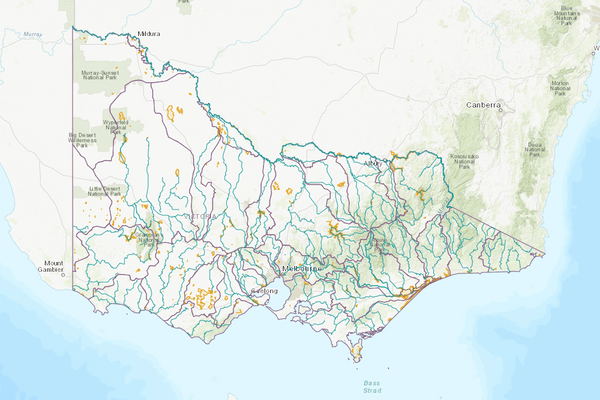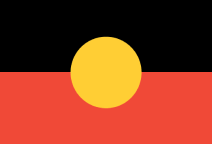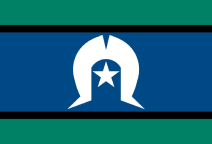About the area
The Campaspe basin is in north-central Victoria. It extends 150 km north from the Great Dividing Range to the Murray River and is 45 km across at its widest point.
The basin experiences hot summers, particularly in the north. Annual rainfall varies from over 900 mm in the southern headwaters to around 400 mm at Echuca.
Most of the basin has been cleared for agriculture; however significant forested areas remain in the Axe Creek catchment and on the southern hills. The area is dominated by dryland farming which produces cereal crops, beef cattle, lambs and wool, while farming under irrigation is popular in the lower catchment for dairying and fruit and vine growing.
More information on water management and accounting is detailed in Water explained.
2023-24 overview
Available water
Catchment inflow was much lower than the previous year.
Licensed diversion restrictions
There were more restrictions on licensed diversions than the previous year.
Seasonal determinations
Campaspe system reached 100% allocation for high and low-reliability water shares – the same as the previous year.
Water use
Less water was diverted for consumptive purposes than the previous year.
When compared to the previous year, in 2023-24:
- less rainfall was received, catchment inflow was much lower and storage levels peaked and declined at lower levels
- there were more restrictions on licensed diversions from streams
- high-reliability and low-reliability entitlements reached 100% allocation
- less water was diverted from the basin for consumptive uses.
Climate
Rainfall
In 2023-24, rainfall was close to the long-term average across most of the Campaspe basin but was above average in the northern plains and below average in the southern upper reaches of the Campaspe and Coliban Rivers. This was lower than the previous year when rainfall was very much above average over the entire basin.
Figure 1 displays the rainfall received in 2023-24 compared to the long-term average (1975-2024).
Figure 1: Rainfall deciles, Campaspe basin
Sourced from the Australian Bureau of Meteorology
River basin water balance
This section describes the known and estimated inflows, outflows and change of storage volumes in the basin.
More detail on major on-stream storages, catchment inflows, diversions and small catchment dams can be found in the sections below the water balance.
Of the total inflows, 75% flowed out from the Campaspe River as outflows to the Murray River in 2023-24.
Water balance table
The table below shows the total volumes of water available and supplied from water resources in the Campaspe basin in 2023-24.
Table 1: Water balance, Campaspe basin
Major on-stream storages
Major - greater than 1,000 ML - on-stream storages in the Campaspe basin are included in the water balance.
Storage levels
Storage levels in the Campaspe basin were 88% on 30 June 2024.
Lower than the previous year
On 30 June 2023, storage levels were 97% full.
Table 2: Storage levels, Campaspe basin
Inflows
Catchment inflow
Catchment inflow represents the volume of water flowing into the waterways of a basin. It is calculated as the total outflows and change in storage minus the known inflows. The long-term average inflow presented has been updated from the previous Victorian Water Accounts, as detailed in Water Explained. The updated long-term average inflow has been applied to this year and the previous year’s volume in this report.
Below average inflows of 189,429 ML were received (75% of the long-term average of 252,200 ML), much less than the previous year (332% of the long-term average).
Below average catchment inflow received
Catchment inflow was 75% of the long-term average annual volume of 252,200 ML.
Much less water received than the previous year
Catchment inflow was much less than the previous year (332% of the long-term average).
Wastewater treatment plants
Water treated at wastewater treatment plants can be used to supplement water available in the basin. Water discharged to waterways from treatment plants is included as an inflow to the water balance.
Information on treatment plants is reported in the water supply local reports for the water corporation responsible for managing the plant.
In this basin, wastewater treatment plants are managed by Coliban Water and Greater Western Water.
Outflows
Diversions
In 2023-24, 39,023 ML of water was diverted for consumptive uses: town, domestic and stock, irrigation and commercial supply. This was less than the 44,139 ML diverted in the previous year. Although the total volume diverted was less, the volume diverted for irrigation and commercial supply was higher than the previous year. The overall decrease in consumptive use was due to the 8,456 ML decrease in the estimate of small catchment dam use volume.
Small catchment dams
Water harvested, used and lost by small catchment dams (farm dams) is included in the water balance.
Table 3: Small catchment dams, Campaspe basin
Entitlements and compliance
Entitlements provide the basis for how water is shared in the basin.
Entitlements to water in regulated systems in the Campaspe basin provide for the right to carry over unused allocation to the next season. In the Campaspe basin, these entitlement holders can carry over unused water up to 100% of their entitlement volume; any unused water above this amount is written off as an end-of-season forfeiture. Water held above entitlement volume is also subject to a risk of spill: 22,891 ML was written off due to spill events in 2023-24.
Consumptive diversions under bulk entitlements are assessed against the Murray-Darling basin annual cap target for the Campaspe valley. Details of this assessment are published annually in the MDBA’s cap register and annual water take report.
Since 2019-20, the consumptive diversions are also assessed against the annual permitted takes under the Murray-Darling Basin Plan Sustainable Diversion Limit (SDL) compliance reporting which are annually published in the MDBA’s SDL accounts register of take and the Inspector-General of Water Compliance’s SDL compliance statement.
Entitlement volumes
Rights to water in the Campaspe basin are shown in Table 4.
Entitlement volumes represent a maximum volume of water that can be taken in a one-year period. The volume available in a particular year is dependent on the rules for allocating water set out in the entitlement and the seasonal conditions in that year, which can vary. The rules for allocating water under an entitlement differ between entitlements and systems. This affects the ability and likelihood of water being taken in a particular year.
Table 4: Annual entitlement volumes at 30 June, Campaspe basin
Available water and take under entitlements
Total water available under entitlements represents the volume of water that was available to be taken by entitlement holders in 2023-24. The volume includes carryover from the previous year, seasonal allocations and net trade into the basin.
Water available under entitlements
High- and low-reliability entitlements received 100% allocation – the same as the previous year.
Water taken under entitlements
There was 63,814 ML taken under entitlements in 2023-24, more than the previous year (44,516 ML).
Seasonal allocations
- High-reliability entitlement allocations opened at 100% (earlier than the previous year). Low-reliability entitlements opened at 46% in July 2023 and reached 100% by December 2023. This is the second low-reliability seasonal determination in the Campaspe system since 2017-18.
- For the 13th year in a row, the 2023-24 Coliban Water rural season opened with an allocation of 100%.
Restrictions on licensed diversions from streams
- A total ban was in place for Wanalta and Cornella Creeks for the entirety of 2023-24.
- There was a peak of 18 streams with total bans on licensed diversions by March 2024, compared to a peak of 17 streams during the previous year.
- There were no restrictions in place for the Meadow Valley Creek, Mia Mia Creek, and Native Gully Creek for the entirety of 2023-24.
Available water and take table
This table shows the volume of available water and the volume taken under entitlements in 2023-24.
More information on available water and take has been detailed in How we account for surface water.
In 2023-24, more water was taken under entitlements than the previous year.
Table 5: Available water and take under entitlements, Campaspe basin
Compliance
Compliance against water entitlements is reported for this basin in 3 areas:
- entitlement issued: that the volume of entitlements issued in a basin does not exceed formal caps, and has not increased without appropriate approvals
- water taken: that the volume of water taken during the year does not exceed the volume considered to be available for consumptive and/or in-stream use during that year
- bulk entitlement provisions: that holders of entitlements do not breach any provisions that are documented in their bulk entitlement orders.
Total entitlement volume
There was no net increase in the total entitlement volume from the previous year.
Total volume diverted
The total volume diverted under entitlements (63,814 ML) was within the volume available for the year (127,150 ML).
Individual bulk entitlements
No individual bulk entitlement holder took more than the annual volume made available to them.
Exceptions to compliance
Individual bulk entitlement holders complied with all provisions in their entitlements. However, one compliance difficulty was reported. See note below.
Note to compliance difficulties:
- Goulburn-Murray Water reported that flows downstream of Lake Eppalock were below the minimum requirements on 6 days. Unanticipated minimum flow increases due to higher inflows occurred on 2 days. The other 4 days were due to releases being reduced at the end of December 2023 and the start of January 2024 to minimise flows in the river following heavy rain. Minimum passing flows not provided were credited to the passing flow account for later use.
Water for the environment
Environmental watering sites
Environmental watering sites and environmental values in the Campaspe basin that depend on water for the environment include:
- several native fish species, including Murray cod, silver perch, golden perch, Murray-Darling rainbowfish and flat-headed gudgeon
- Platypus, rakali (water rats), turtles and frogs are also present along the length of the river
- riparian vegetation is dominated by large, mature river red gum trees that support wildlife (such as the swift parrot and squirrel glider)
Water from the Campaspe basin also feeds into the Murray basin, helping to maintain internationally significant environmental assets (such as Gunbower Forest and Kerang Wetlands) in that basin.
Environmental water reserve
In 2023-24, water for the environment in the Campaspe basin comprised:
- the Campaspe River Environmental Entitlement 2013, which includes 20,855 ML of high-reliability and 4,394 ML of low-reliability entitlements held by the Victorian Environmental Water Holder (VEWH)
- the Environmental Entitlement (Campaspe River – The Living Murray Initiative) 2007, which includes 126 ML of high-reliability and 5,048 ML of low-reliability entitlements held by the VEWH
- 6,594 ML of high-reliability water shares and 395 ML of low-reliability water shares held for the environment
- 30 ML take and use licence held by the Commonwealth Environmental Water Holder
- water set aside for the environment through the operation of passing flow conditions:
- on consumptive bulk entitlements held by Coliban Water, Greater Western Water and Goulburn-Murray Water
- on licensed diversions
- all other water in the basin not allocated for consumptive uses: this water also provides social, recreational and cultural benefits.
Environmental water use
In 2023-24, 26,825 ML of environmental water was delivered in-stream in the Campaspe basin. Additionally, there was 283 ML of passing flows withheld and then delivered under the Bulk Entitlement (Campaspe System - Coliban Water) Conversion Order 1999 in the Coliban River. There was also an additional 300 ML delivered in-stream in the Campaspe River that was diverted from the Goulburn basin.
Management responsibilities
Management of water in the Campaspe basin is undertaken by various parties
| Authority | Management responsibilities |
|---|---|
| Coliban Water |
|
| Goulburn-Murray Water |
|
| Greater Western Water |
|
| North Central Catchment Management Authority |
|
| Water supply system | 2022-23 (ML) | 2023-24 (ML) |
|---|---|---|
| Goornong | 67 | 106 |
| Main integrated system | 260 | 182 |
| Bendigo system | 12,120 | 11,769 |
| Castlemaine system | 1,797 | 2,060 |
| Heathcote system | 288 | 304 |
| Kyneton system | 1,072 | 1,211 |
| Trentham | 111 | 100 |

